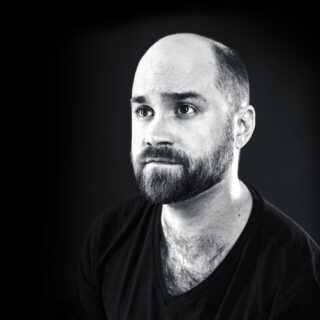In this Q&A with The Art Left Creative’s Director and Cinematician, Ryan McDonald, learn about how our 2019 Season play trailers were made and their experience working for a theatre festival.
Plus, rewatch all four amazing trailers in one place!
Can you tell us a bit about your background and how you founded The Art Left?
I’d actually say that I “found my way into it” as The Art Left name was coined by my teammate, Markian Tarasiuk. To make a long story short: ever since I could carry my parents’ VHS video camera, I have made films. I also studied film and theatre at the University of Winnipeg until I auditioned for Langara College’s Studio 58, got in, and moved to Vancouver. While in attendance, I noticed that the trailers I was seeing for theatre shows in town were lacking a cinematic approach. In the years that followed I founded Chicknskratch Productions with the goal of providing that cinematic approach, and affordable video content for artists. Since then, I’ve had the pleasure of working with nearly every theatre company in town. As the business grew, I started working with Jordan Lloyd Watkins, a video ‘Wiz’, and a couple years later with Markian, who was more focused on graphic and web design. Last year we decided to merge our companies under the Art Left banner.
What interested your team in working for Bard?
For a while I would joke that the only two theatre companies we hadn’t worked with in town were The Arts Club and Bard on the Beach, so we were definitely happy to change that. I think Bard on the Beach has a pretty strong reputation for creating high-calibre work, so obviously that was of interest to us as well. Also, since all three of us come from a theatrical background, we have a lot of friends who are routinely in the cast or production team, so it’s a pleasure to get to spend time with all those folks, as well as to support our colleagues.
How does your team prepare for creating a trailer?
Each company we work with has their own unique challenges and procedures that we need to consider when planning and shooting. With Bard, we attend the tech-dress rehearsal of each play to scout the production. We note the moments we think will read cinematically, decide our camera arrangements, and identify any music from the sound design that stands out to us. We then come back to a second dress rehearsal two days later and film the play with three cameras to give us a lot of variety when editing.
What kind of challenges do you face when filming live theatre?
The most common challenge is lighting. Live performance often uses a lot of lighting changes, which means we have to adjust our settings constantly to keep up. Some shows also employ really dim lighting, which can look really beautiful to the naked eye; however, the cameras require a lot more light. The other challenges we face include: limited time to shoot, lack of proximity to stage, shooting around unfinished production items in rehearsal (set, props, costumes, etc.), or, on the contrary, shooting around audience members at invited dress rehearsals without disturbing them.
How do you decide on which clips to use?
Often we have a good idea of what moments we like immediately after filming them, however, I also like giving the footage over to the team members that weren’t at the show, to see what stands out to them since these will typically be moments that speak for themselves, without having the context of the entire show.
What are some of your favourite techniques and tools for filming?
I like adding motion to the frame. Theatre, and live performance in general, are long-form artistic mediums that make use of large spaces, with big dramatic moments that are often built up to very slowly. In a 30 second-to-1 minute trailer on someone’s computer or phone there isn’t time for that; we need to pull people in right away. Adding motion into our camera work gives life to stillness and helps replicate a live feel without being there. As a result, I lean into my sliders and steadicam pretty often.
What was your biggest highlight from last year’s season?
Creating our first trailer for The Taming of the Shrew for me was the highlight of our season working with Bard. It was where we got to meet everyone and establish our workflow with the company. The Bard team was also very happy with our first stab at a trailer for them, which immediately made us feel confident that we were on the same page and made the rest of the season go relatively smoothly.
Which of the four trailers stands out to you the most?
I think the trailer edit for Coriolanus came together the easiest and was the most talked about; there were just a ton of epic moments in that play that looked incredibly cinematic. Despite that, shooting was the most complicated. I had some camera issues at dress rehearsal and had to shoot a second night to pick up the pieces, except now there was a full house to contend with. It also made editing the B Roll (supplemental footage) we send to media outlets more complex because I had to stitch together performances from different nights, but ultimately, the challenge is what made it rewarding.
We want to know which trailer was your favourite and why—tell us in the comments below!



